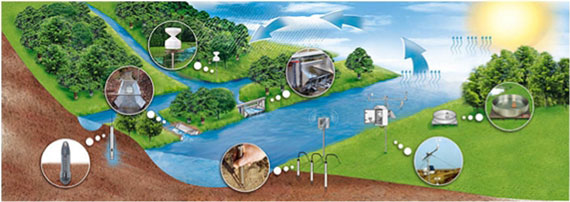| Feb 08, 2013 |
Prehistoric plant plays key role in new water-energy landscape
|
|
(Nanowerk News) One ingenious remedy to solve ten problems. That is the plan for Park Lingezegen between Nijmegen and Arnhem. A small water plant called Azolla – Radboud University Nijmegen has been investigating its useful characteristics for several years – will play a key role in this project that received a grant of 6.5 million euros from the European Regional Development Fund (ERDF). Wageningen University and various regional companies, governments and services are also taking part. The project starts officially on 31 January.
|
|
Ten problems…
|
|
1. Climate change means high river levels occur more often
2. Climate change is causing longer-lasting and more serious droughts
3. CO2 emissions are rising, whereas the Netherlands promised to reduce them
4. Areas of agricultural land require a new land use designation
5. World supplies of phosphate (an important agricultural fertiliser) are running out
6. The Dutch soil contains too much phosphate fertiliser. This reduces the quality of “new countryside”
7. New wetlands often develop foul-smelling pools full of blue-green algae
8. Fossil fuels are becoming scarce
9. The Netherlands needs to create more employment
10. Governments, services and nature conservation organisations work at differing levels, without any real contact and at cross purposes
|
|
… one solution
|
|
Put the water plant Azolla to work. Fifty million years ago it absorbed so much CO2 that our planet entered a lengthy ice age. Azolla – duckweed fern – still absorbs CO2 and grows incredibly fast in water containing lots of nitrogen, for example the water on old, polluted agricultural land. This opens up possibilities for prolonged storage of water in the ground behind a dike, making the water so clean it a) is no longer putrid, b) is suitable for use as drinking water and c) provides attractive wetlands. With the help of smart sensors and specific weather forecasting, you can remove this water from your storage area before river levels rise too much. It can then flow into the river basin.
|
|
At the same time, Azolla accumulates considerable amounts of phosphate. That can be extracted, creating useful income – plus jobs. The biomass that remains is suitable for generating energy locally. To achieve this, it is essential to bring all local stakeholders into line.
|
 |
|
Radboud and Waternext
|
|
And Thea van Kemenade, business development consultant at Radboud University Nijmegen, has done just that together with Waternext, a network focused on water based in the eastern part of the Netherlands. This network includes Wageningen University, municipalities, provinces, and commercial partners such as Eijkelkamp Agrisearch Equipment, Meteoconsult and Alliander. The area chosen for the project is in Park Lingezegen, a green zone covering around 1500 hectares between Arnhem and Nijmegen, a residential growth area. Work on this new natural landscape will begin in the spring of 2013 and be ready within a few years. The project is already so successful that a call for more European grants is being prepared. Azolla could then be put to work at other places, thus solving a range of problems in one fell swoop.
|

